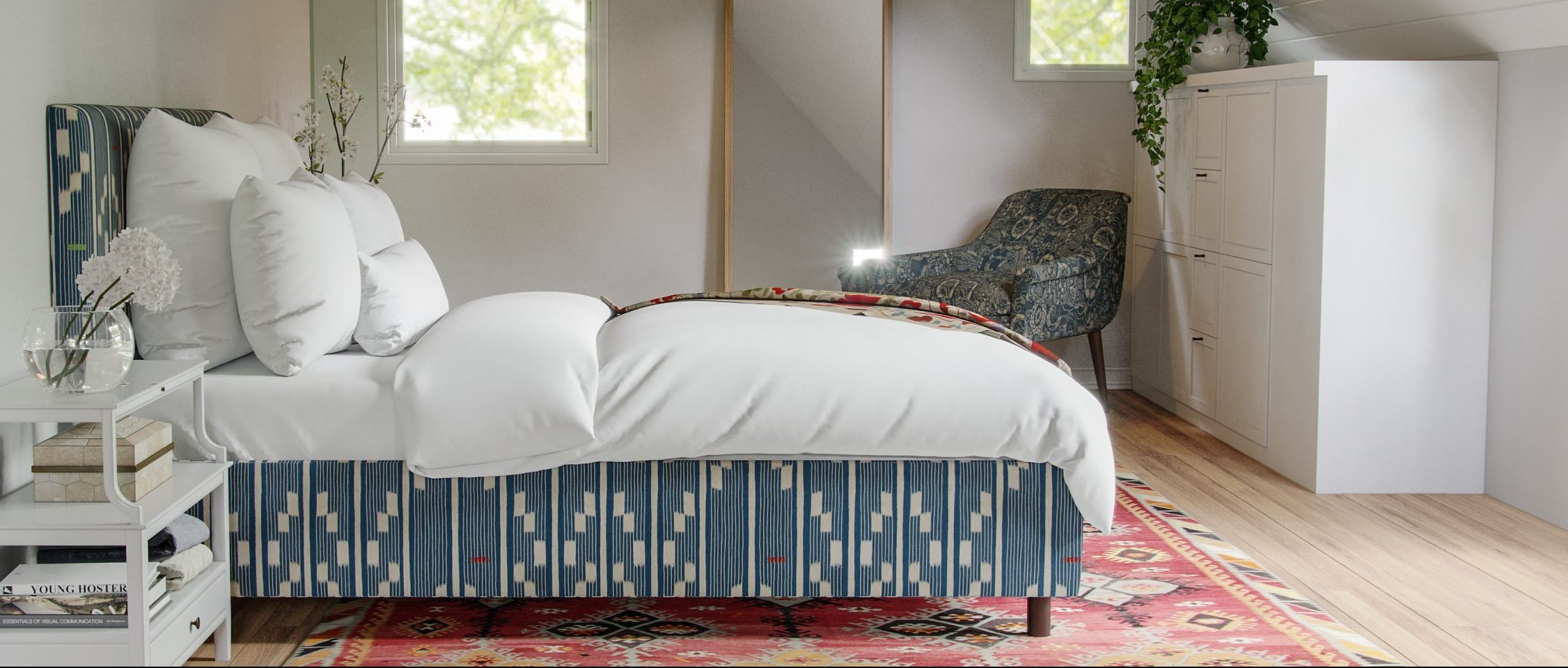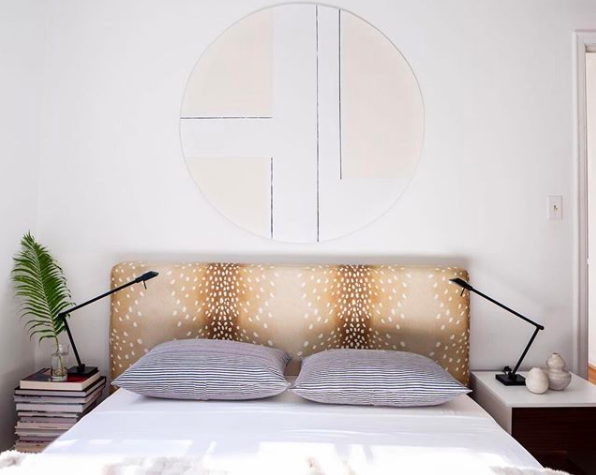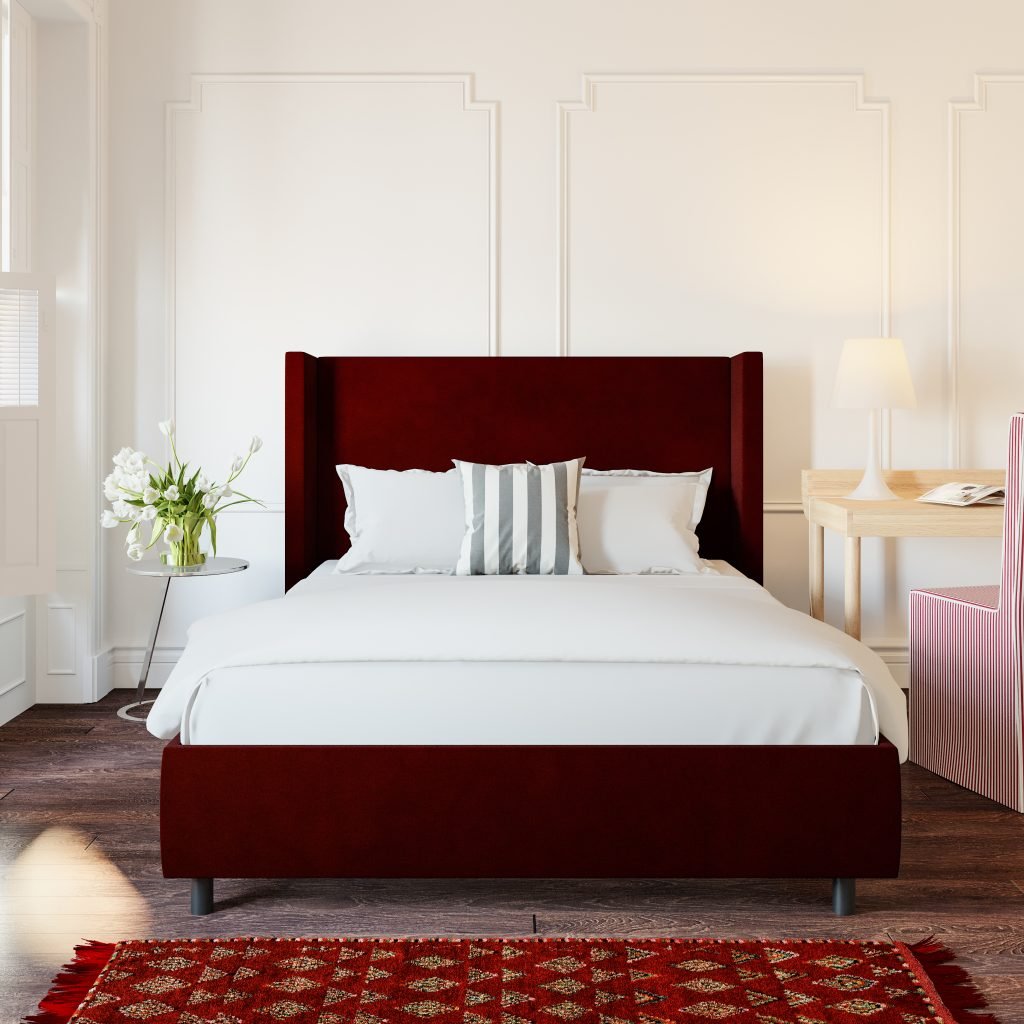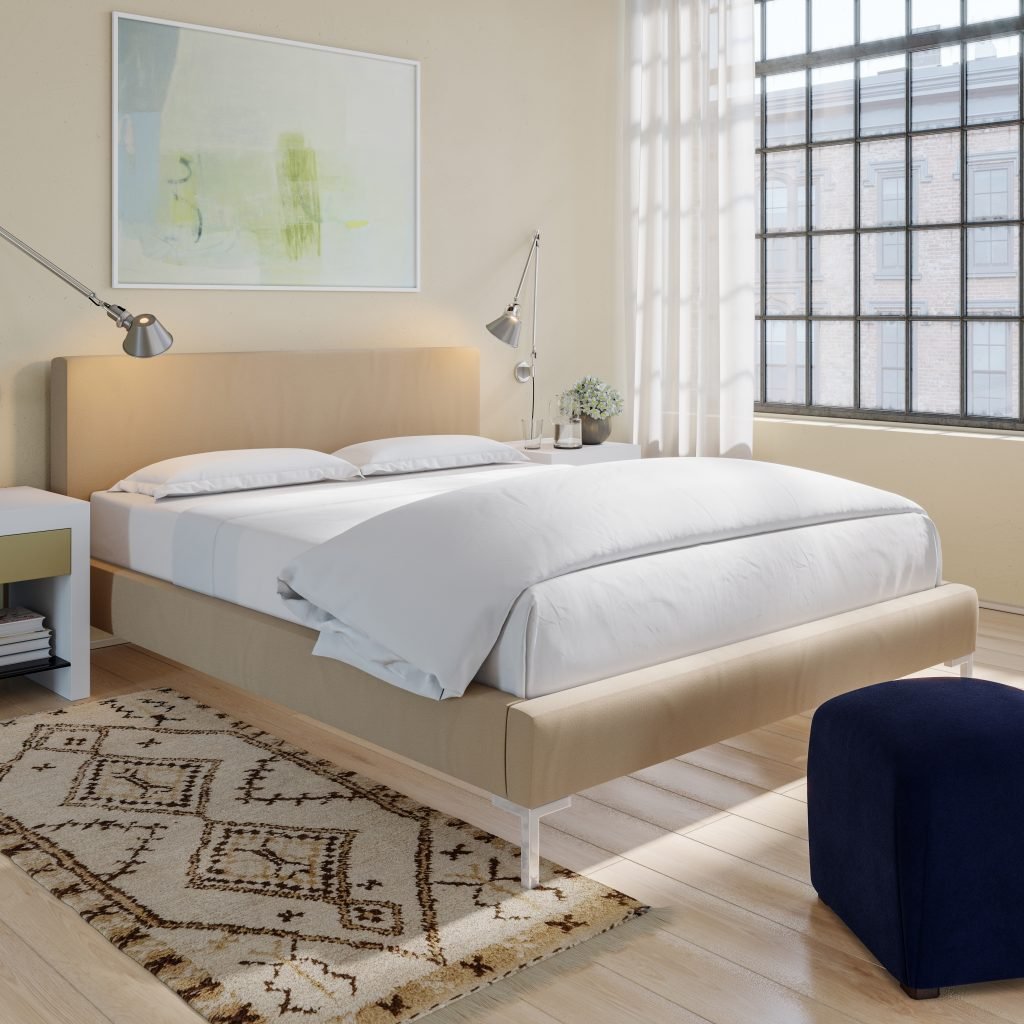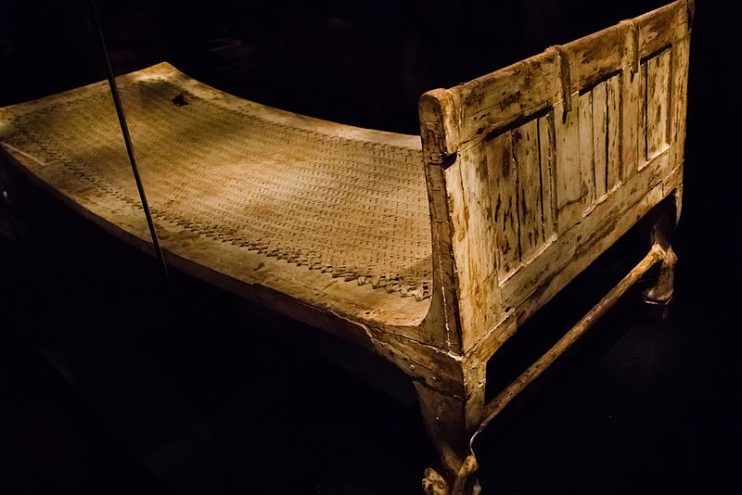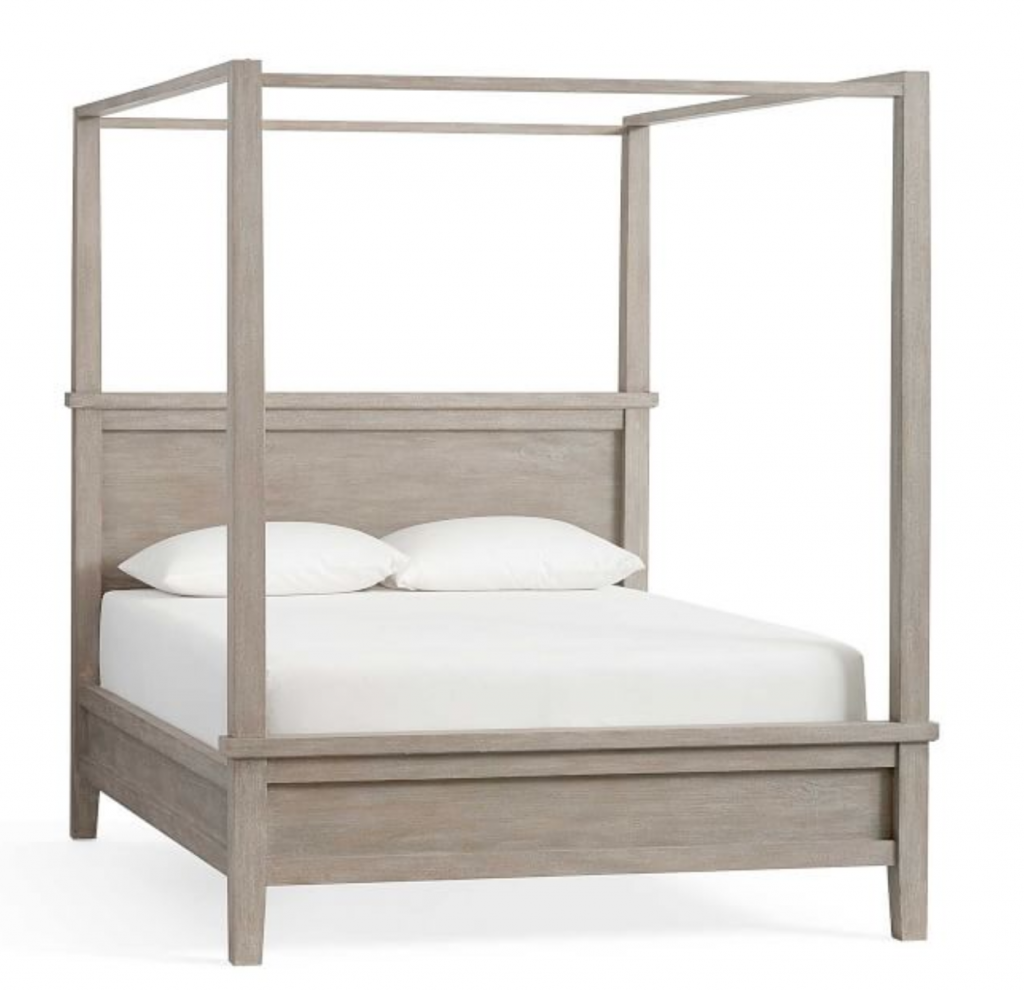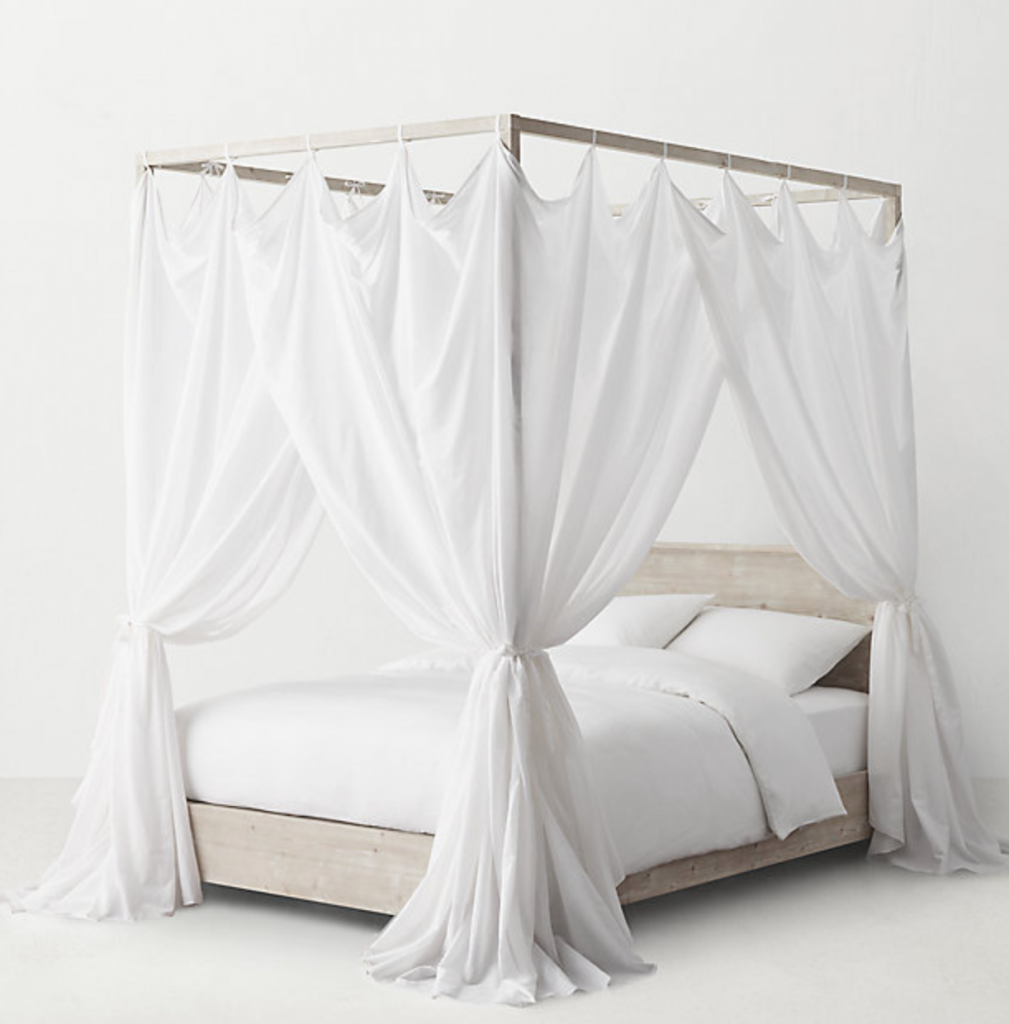Wood or upholstered: it’s the eternal question when it comes to choosing a bed. Which is better? Should you go for practical or plush, luxurious or minimalist, dreamy or industrial, comfy or sleek? And – more importantly – does it always have to be one or the other?
In a word: no!
When it comes to beds, there are so many options to choose from and even more ways to vary them that everyone from purists to hybrid-undecideds can find “the one.” As with almost all big furniture choices, the key is to know what matters most to you so you can land on just what you need. Here’s a breakdown of the most popular styles of beds and which bed personalities each one works best for.
The Comfort Classic: The Upholstered Bed
This is the most popular style of bed for a few obvious reasons.
Upholstered beds are soft
Being cushioned and wrapped in fabric, an upholstered bed lends a lovely softness to the bedroom. Inviting and warm, they beckon you to sink in and relax. If you’re drawn more to cozy than sleek, an upholstered bed is probably your jam.
Upholstered beds are comfortable
If you’re anything like us, reading and watching television in bed is a key activity for life happiness. An upholstered bed offers a soft-yet-firm backrest to prop pillows against so you can sit up in comfort.
Upholstered beds are versatile
With so many different shapes and fabrics to choose from, an upholstered bed can take on literally hundreds of permutations and looks. First, to narrow this down, you’ll want to choose the shape that suits your taste and style.
For grand and dramatic, you can choose a tall headboard like one of the ones shown here.
If you’re longing for something with a traditional twist, consider a standard upholstered headboard in a floral pattern, or one accented with brass or nickel nailheads.
One of our favorite styles is the modern platform bed. Adding slender metal or wood legs to an upholstered bed makes it feel much sleeker and lighter. These beds are generally more low profile, and – depending on what fabric and leg style you choose – work great in rooms ranging from mid-century modern to contemporary.
Speaking of fabrics, here’s where things get fun. Sure, you can go with a rich velvet for a tall wingback, and that would be gorgeously sophisticated. But there’s no rule that says you can’t take a regal shape and make it wild with a leopard print or jaunty with a crisp navy and white cabana stripe! Leather is classically handsome on a plush tufted headboard, but that same tufting can become beautifully boho when done in a soft flax-colored linen.
A last word about upholstered beds…
The one caveat for upholstered beds is that you need to be willing to take a little bit of care with them. Fabric collects dust, so now and then you’ll need to use a lint roller or vacuum to keep it fresh. If morning coffee in bed is your thing (or a glass of evening wine…hey, no judgments here), you’ll want to take care to avoid spills. Oils from your hair can also ruin fabric over time, so when you prop yourself up you’ll want to place pillows strategically. Lastly, if you have pets that shed, keep that in mind as they tend to looove rubbing themselves up against upholstered bed frames.
The Workhorse: Wooden Beds
Grand. Warm. Glossy. Rustic. Painted. The list of ways we could describe wooden beds is long and varied, but overall, we can say one thing about all these options: they have stood the test of time.
Wooden beds have been around since the days of Pharoahs and Caesars (see below for an ancient Egyptian model). For centuries, simple wood platforms were piled with folded blankets to provide a warm respite for royalty or the wealthy, until, eventually, modest versions began appearing in middle class homes. Headboards were added in the sixteenth century to keep out drafts. Today, wooden beds have evolved exponentially into a dizzying array of options.
Like their upholstered cousins, wooden beds have a few distinct pluses going for them:
Wooden beds have natural beauty
Being made from an elementary natural material, wooden beds possess soul and warmth that is grounding. Even the most delicately carved or painted version adds gravitas to a bedroom.
Wooden beds are practical
In the years following World War I, as France and other countries worked to solve the terrible housing conditions brought about by the war, modernist design emerged to heed that call. Pioneers like Le Corbusier designed furniture made of wood, steel, and metal not only because these materials were less fussy, but also because they were more hygienic, practical, and easier to reproduce. Thus wood and metal beds became de rigeuer, a style still embraced by today’s fans of modern furniture.
Wood beds are arguably easier to clean and maintain than upholstered versions. Just a quick swipe of a dusting cloth now and then will keep your bed pristine. You don’t need to worry too much about spills or pet hair, either.
Wooden beds come in a wide range of styles
From swooping sleigh beds to modern platforms, simple panel beds to elegant four-poster classics, wood beds are every bit as varied as upholstered ones – if not more so.
The variety and finishes of woods available also ensure there’s one right for every décor. Driftwood, for instance, works great in a beach house for a coastal vibe, whereas walnut is the wood of choice for most mid-century modern rooms.
Wooden beds solve commitment issues
If you’re someone who likes to change things up often, a wood bed is much more versatile than an upholstered one. Take a look, for instance, at how these two wood canopy beds are similar frames transformed just through different bedding and décor ensembles:
.Painted woods beds are even more of a bonus for décor chameleons, as they can pretty easily change their appearance with a new coat of paint. A white distressed-painted bed that was a favorite in a shabby chic phase, for instance, can be transformed into something glamorously sexy with a light sanding and a coat of red high-gloss paint.
The obvious “downside” is that wood beds are of course harder and less yielding than upholstered ones. If you like to read or watch television from bed, this is definitely something to consider.
Because they tend to be larger in scale and take up more visual space, some wooden beds might overpower a small bedroom, so also be sure to take the size of your room into account. A smaller room would be better served by a platform bed that is raised up on legs than one that sits low to the ground. Consider also lighter woods like pine or driftwood rather than dark options like cherry or ebony.
The Problem-Solver: The Hybrid Upholstered-and-Wood Bed
In recent years, furniture designers came out with a solution to the dilemma of wanting the comfort of upholstery with the ease and warmth of wood. Behold, the hybrid: wood-framed beds with upholstered headboards. These are a great choice if you’re really torn between the two.
Whether you go for plush or solid or any combination therein, be sure to have some fun with your choice and make it your own. Remember, as with all décor choices, there are no hard and fast rules. What matters most is that it feels happy and right for you.
By: Debra Goldstein, Staff Writer at The Inside

